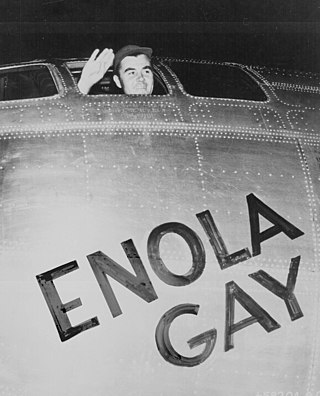
The Enola Gay is a Boeing B-29 Superfortress bomber, named after Enola Gay Tibbets, the mother of the pilot, Colonel Paul Tibbets. On 6 August 1945, during the final stages of World War II, it became the first aircraft to drop an atomic bomb in warfare. The bomb, code-named "Little Boy", was targeted at the city of Hiroshima, Japan, and destroyed about three-quarters of the city. Enola Gay participated in the second nuclear attack as the weather reconnaissance aircraft for the primary target of Kokura. Clouds and drifting smoke resulted in Nagasaki, a secondary target, being bombed instead.
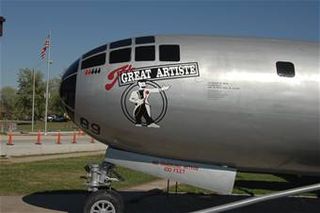
The Great Artiste was a U.S. Army Air Forces Silverplate B-29 bomber, assigned to the 393d Bomb Squadron, 509th Composite Group. The aircraft was named for its bombardier, Captain Kermit Beahan, in reference to his bombing talents. It flew 12 training and practice missions in which it bombed Japanese-held Pacific islands and dropped pumpkin bombs on targets in Japan. It was the only aircraft to have participated in both the bombings of Hiroshima and Nagasaki, albeit as an observation aircraft on each mission.

Project Alberta, also known as Project A, was a section of the Manhattan Project which assisted in delivering the first nuclear weapons in the atomic bombing of Hiroshima and Nagasaki during World War II.

Wendover Air Force Base is a former United States Air Force base in Utah now known as Wendover Airport. During World War II, it was a training base for B-17 and B-24 bomber crews. It was the training site of the 509th Composite Group, the B-29 unit that carried out the atomic bombings of Hiroshima and Nagasaki.
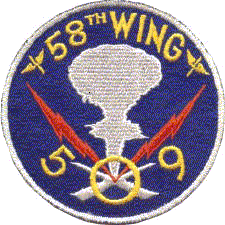
The 509th Composite Group was a unit of the United States Army Air Forces created during World War II and tasked with the operational deployment of nuclear weapons. It conducted the atomic bombings of Hiroshima and Nagasaki, Japan, in August 1945.
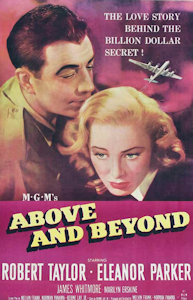
Above and Beyond is a 1952 American World War II film about Lt. Col. Paul W. Tibbets Jr., the pilot of the aircraft that dropped the atomic bomb on Hiroshima in August 1945.

Full House was the name of a B-29 Superfortress participating in the atomic bomb attack on Hiroshima on August 6, 1945.
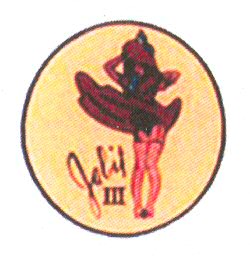
Jabit III was the name of a B-29 Superfortress participating in the atomic bomb attack on Hiroshima on August 6, 1945. Assigned to the 393d Bomb Squadron, 509th Composite Group, Jabit III was used as a weather reconnaissance aircraft and flew to the city of Kokura, designated as the secondary target, before the final bombing to determine if conditions were favorable for an attack.

Necessary Evil, also referred to as Plane #91, was the name of Boeing B-29-45-MO Superfortress 44-86291, participating in the atomic bomb attack on Hiroshima on August 6, 1945.
Up An' Atom was the name of a B-29 Superfortress configured during World War II in the Silverplate project to carry an atomic bomb.
Laggin' Dragon was the name of a Boeing B-29 Superfortress configured to carry the atomic bomb in World War II.

Big Stink – later renamed Dave's Dream – was a United States Army Air Forces Boeing B-29-40-MO Superfortress bomber that participated in the atomic bomb attack on Nagasaki, Japan on August 9, 1945. Assigned to the 393d Bomb Squadron, 509th Composite Group, it was used as a camera plane in support of the bomb-carrying B-29 Bockscar to photograph the explosion and effects of the bomb, and also to carry scientific observers. The mission was flown by crew C-14 but with Group Operations Officer Major James I. Hopkins, Jr., as the aircraft commander.

Silverplate was the code reference for the United States Army Air Forces' participation in the Manhattan Project during World War II. Originally the name for the aircraft modification project which enabled a B-29 Superfortress bomber to drop an atomic weapon, "Silverplate" eventually came to identify the training and operational aspects of the program as well. The original directive for the project had as its subject line "Silver Plated Project" but continued usage of the term shortened it to "Silverplate".
Some Punkins was the name of a B-29 Superfortress modified to carry an atomic bomb during World War II.
Next Objective was the name of a Boeing B-29-36-MO Superfortress, 44-27299, Victor 86, modified to carry the atomic bomb in World War II.

Top Secret was the name of a Boeing B-29 Superfortress modified to carry the atomic bomb in World War II. It served with the Army Air Forces and United States Air Force from 1945 until 1954.
Strange Cargo was the name of a B-29 Superfortress modified to carry the atomic bomb in World War II.
Luke the Spook was the name of a Boeing B-29-50-MO Superfortress configured to carry the atomic bomb in World War II.

Bockscar, sometimes called Bock's Car, is the name of the United States Army Air Forces B-29 bomber that dropped a Fat Man nuclear weapon over the Japanese city of Nagasaki during World War II in the second – and most recent – nuclear attack in history. One of 15 Silverplate B-29s used by the 509th, Bockscar was built at the Glenn L. Martin Aircraft Plant at Bellevue, Nebraska, at what is now Offutt Air Force Base, and delivered to the United States Army Air Forces on 19 March 1945. It was assigned to the 393rd Bombardment Squadron, 509th Composite Group to Wendover Army Air Field, Utah, in April and was named after captain Frederick C. Bock.

The 216th Army Air Forces Base Unit (Special) provided base services at Wendover Army Airfield, where the 509th Composite Group was stationed during World War II. As such, it became involved in the Manhattan Project's program of testing bombs and aircraft under the codename Project W-47.
















